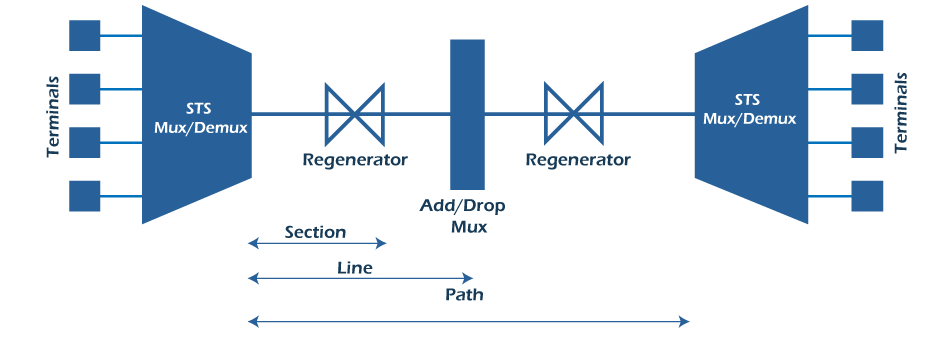Difference between SONET and SDHSONET and SDH are optical interfacing technologies that are mostly utilized in telecommunication networks. These technologies are fairly similar, but they have a few differences. The main distinction between the SONET and SDH is that SONET was designed and developed by the ANSI, and it may carry payloads for the North American PDH hierarchy. In contrast, SDH was designed and developed by the ITU-T (international standard). Moreover, the SONET frame format often employs v3 containers for data transfer, whereas SDH employs v4 containers for the same purpose. In this article, you will learn about the difference between SONET and SDH. But before discussing the differences, you must know about SONET and SDH with their advantages and disadvantages. What is SONET?SONET is an abbreviation for "Synchronous Optical Network". It is a telecommunication protocol that was designed and developed by Bellcore. It is utilized to transfer massive amounts of data over comparatively longer distances utilizing optical fibre. Its main role is to transfer numerous digital data streams through optical fibres, and the light source is either LED or laser light. Most of the data processing is done electronically, like switching. It is utilized and implemented in North America. It was created to meet the requirement for interoperable suppliers and technologies that existed in previous years. How SONET works?
SONET is made up of multiplexed DS0, DS1, or DS3 digital signal channels that are linked together using optical time-division multiplexing (TDM) to create a single Synchronous Transport Signal (STS) link. The common SONET transmission rate is 810 bytes per 125 microseconds, and frames are sent whether or not there is a payload (data). A typical STS-1 SONET data line consists of 810 DS0 channels, 783 of which are utilized for data transmission and 27 are utilized for framing, format identification, error correction, and other sorts of overhead. Advantages and Disadvantages of SONETThere are various advantages and disadvantages of SONET. Some advantages and disadvantages of SONET are as follows: Advantages
Disadvantages
What is SDH?SDH is an abbreviation for "Synchronous Digital Hierarchy". It is defined as a multiplex technology that is mainly utilized in telecommunication. However, SONET and SDH are quite similar, but SDH is an advanced version of SONET. It has enabled a transmission network that does not depend on a vendor and offers a complicated signal structure and significant characteristics. As a result, new network technologies and devices must be deployed, and high power is required to handle device operations. The properties of SDH are based on high-order multiplexing. It is accomplished with a hierarchy of increasing data rates of up to 565 Mbps within Europe. It offers faster and less costly network connections than PDH. A plesiochronous system is one in which multiplexing involves the combination of lightly nonsynchronous speeds, resulting in a Plesiochronous digital hierarchy (PDH). The PDH was the preprocessor of the SDH, but it was inefficient because of the bit interleaving where the requirement for the new synchronous technique arose. Advantages and Disadvantages of SDHThere are various advantages and disadvantages of SDH. Some advantages and disadvantages of SDH are as follows: Advantages
Disadvantages
Key differences between SONET and SDH
Here, you will learn the various key differences between SONET and SDH. Some main differences between SONET and SDH are as follows:
Head-to-head comparison between SONET and SDHHere, you will learn the head-to-head comparisons between SONET and SDH. The main differences between SONET and SDH are as follows:
ConclusionSONET and SDH are standards that use optical technologies to create a more efficient manner of transferring digital data. On the other hand, SDH offers faster transmission rates than SONET.
Next TopicDifference between
|
 For Videos Join Our Youtube Channel: Join Now
For Videos Join Our Youtube Channel: Join Now
Feedback
- Send your Feedback to [email protected]
Help Others, Please Share










